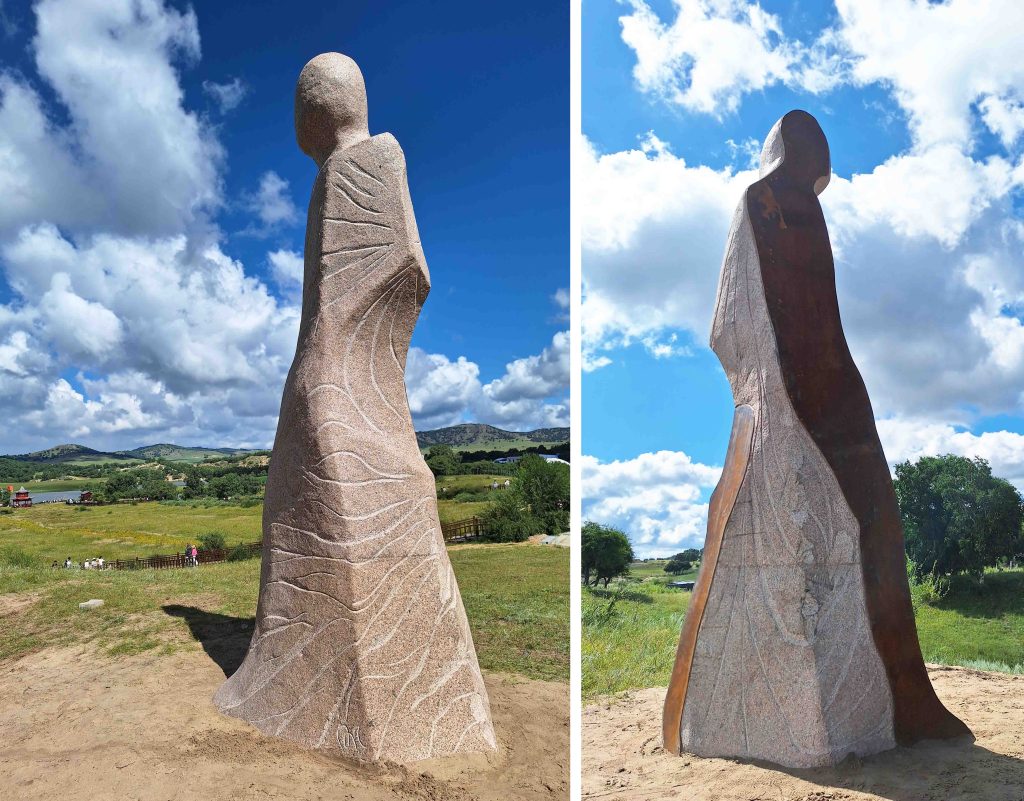The sculpture “Man and Nature” interprets the inseparable inner connection between humans and the natural environment. This three-and-a-half-meter-high granite sculpture, hewn from Luoyuan red granite, integrates perfectly with the natural elements. The artist has cleverly transformed part of the stone into an abstract human torso and independent forms of legs. Through the corten steel plates inlaid on the surface, it visualizes the deep representation of human civilization that is rooted in nature, growing and developing through ecological nourishment. Such content is rarely found in other places. The sculpture “Man and Nature” also refers to and interacts with deep cultural layers—nomadic heritage, reverence for nature, vastness, and resilience—creating a unique resonance. It is a work of art that does not appear to be “parachuted” into the landscape, nor is it disrespectful towards its surroundings. On one side, a timeless icon, the Hongshan Dragon Embryo, is visible. As a symbol of the cycle of life and cosmic power, it is a cornerstone of Chinese identity. This ancient dragon is not just an ornament but embodies a ritual passage. The engraved lines in the granite visualize mountains as the bones of the dragon and rivers as its veins.

